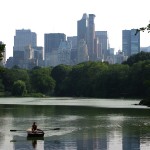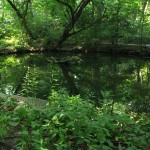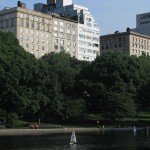Ok time to admit it. I’m not a professional pond installer, in case there was any doubt. I did build my koi pond myself so I saved a ton of labor costs and was able to modify my plans as I went. But those changes also led to a few mistakes which I have listed here so perhaps you won’t.
1) Used two pieces of liner for upper and lower pond but did not bind them. This has led to leaks behind the waterfall that I did not expect. Water will seek out many paths on the way down. Finding them all is a huge challenge.
2) Relied on old information about filtration. Be careful which resources you use to determine your pond building technique. I initially built my system with a gravel filled bog which had to be removed and replaced with a larger box filter. I now have a nice pile of pea gravel and river rock to do something with.
3) Select the pump based on finished pond, not your dream pond. I originally had hopes of building a 2500 gallon pond but ended up with only about 1800 gallons including what used to be the bog. I bought the pump before I even dug the hole. This is critical for establishing the correct flow rates for nitrification cycle.
4) Curves vs square shape. Once in a while I see queries in my blog about how to make a liner fit a rectangular hole. The answer is lots of folds or very neat ones in the corners. A rounded shape is more natural looking and requires less liner manipulation. Also if you are leaning toward a Japanese Garden style the curved shape is definitely the way to go.
5) Pond placement – I had to build up my pond edges to overcome the water drainage in my yard. You can use the dirt excavated to create an island around your pond but it doesn’t look quite natural. If you must put it in a low spot let the area slope from the high point like a water fall to a few feet past your pond at a low point. This will send excess rain water away from your pond.
6) Not budgeting for the large items like a UV Sterilizer or Filter box. Its hard to justify those larger expenses to your spouse when you already spent a chunk on the pond already. Do your research and plan for your expensive items upfront. You may not be able to add on the deck around the pond either if you have to spend money on upgrades you didn’t plan for.
7) Not anticipating the cost of maintaining the pond. The Mrs. grimaces when I make a trip to the local pond store for “Supplies”. She doesn’t even know about the increased water and electricity costs, or the gas spent on all those trips to the pond store.
8) Poor plumbing planning. Redoing plumbing is not terribly expensive, just time consuming. You can’t run your pumps and filters while waiting for the glue to dry on the new pipes, unless you have a way to bypass them.
I am sure there are more but these are the ones that have a large impact. Feel free to share your mistakes and gloat your successes in the comments.




